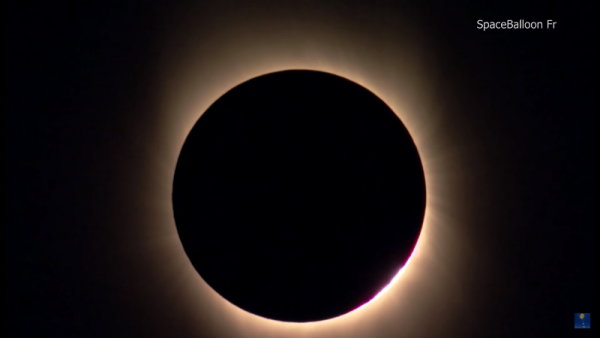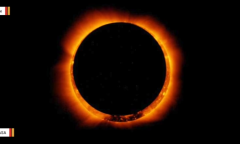By KM Diaz, | June 14, 2017

People across the United States will witness the day turn into a night on August 21 as the total solar eclipse this 2017 will pass over North America. (YouTube)
People across the United States will witness the day turn into a night on August 21 as the total solar eclipse this 2017 will pass over North America. For those who are anticipating the event, Google and the researchers from the University of California, Berkeley created a simulator that allows you to see what the eclipse will look like from your location.
Like Us on Facebook
The last total solar eclipse traveling across the United States from coast to coast was in 1918, that's why this year's happening fueled excitement to some to photograph this rare event. The simulator is part of the Eclipse Megamovie Project. Users can enter the name of their town, city, or their ZIP code to witness the animation of the sun being blocked by the moon, and what is the best time to watch the eclipse.
Dan Sevin, who leads the project from UC Berkeley, said that the simulator could give people closer experience similar to a planetarium show. People can also use their tool to get the best shot for the total solar eclipse.
The goal of the Eclipse Megamovie Project is to gather more than 1,000 photographers and amateur astronomers documenting the event. People can submit the images they captured on that event and will be "stitched together," making a documentary film of the pathway of the eclipse. UC Berkeley said in a statement that the images from the Megamovie submitted by volunteers will be turned into 90-minute eclipse movie that has never seen before.
Hugh Hudson is one of the people who first proposed the project and an astronomer at the UC Berkeley. He noted that movie could be an important tool for scientific research purposes. Images captured before and after the eclipse can help astronomers in mapping the geography of the sun, as well as providing a refined estimate of its actual size.
Meanwhile, for those who are anticipating the total solar eclipse, its path will travel across the United States over the course of the day. The states that will be totally covered by the eclipse are Idaho, Oregon, Wyoming, Montana, Kansas, Iowa, Nebraska, Tennessee, Missouri, Illinois, Georgia, South Carolina, and North Carolina.
You can also access Eclipse Megamovie Project here.
-
Use of Coronavirus Pandemic Drones Raises Privacy Concerns: Drones Spread Fear, Local Officials Say

-
Coronavirus Hampers The Delivery Of Lockheed Martin F-35 Stealth Fighters For 2020

-
Instagram Speeds Up Plans to Add Account Memorialization Feature Due to COVID-19 Deaths

-
NASA: Perseverance Plans to Bring 'Mars Rock' to Earth in 2031

-
600 Dead And 3,000 In The Hospital as Iranians Believed Drinking High-Concentrations of Alcohol Can Cure The Coronavirus

-
600 Dead And 3,000 In The Hospital as Iranians Believed Drinking High-Concentrations of Alcohol Can Cure The Coronavirus

-
COVID-19: Doctors, Nurses Use Virtual Reality to Learn New Skills in Treating Coronavirus Patients










